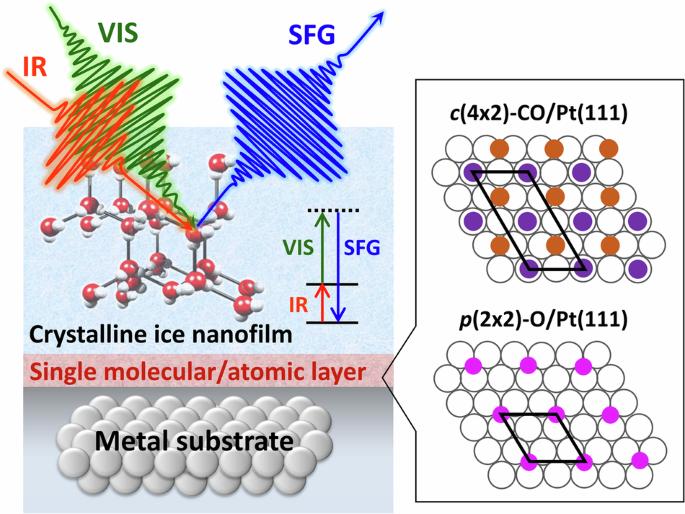Tuning the thermodynamic ordering of strongly correlated protons in ice by angstrom-scale interface modification
IF 9.6
Q1 MATERIALS SCIENCE, MULTIDISCIPLINARY
引用次数: 0
Abstract
The static and dynamic behaviour of strongly correlated many-body protons in nanoscale hydrogen-bond networks plays crucial roles in a wide range of physicochemical, biological and geological phenomena in nature. However, because of the difficulty of probing and manipulating the proton configuration in nanomaterials, controlling the cooperative behaviour of many-body protons remains challenging. By combining proton-order sensitive nonlinear optical spectroscopy and well-defined interface modification at molecular/atomic scale, we demonstrate the possibility of extensively tuning the emergent physical properties of strongly correlated protons beyond the thermodynamic constraints of bulk hydrogen bonds. Focusing on heteroepitaxially grown crystalline ice films as a model of a strongly correlated and frustrated proton system, we show that the emergence and disappearance of a high-Tc proton order on the nano- to mesoscale is readily switched by angstrom-scale interface engineering. These results pave a way to designing and controlling emergent properties of correlated proton systems. The ordering and dynamics of protons in nanoscale hydrogen-bond networks are crucial for a wide range of physicochemical, biological and geological phenomena in nature. Here, combining vibrational spectroscopy and Angstrom-scale interface engineering of crystalline ice films, an extensive tuning of strongly correlated proton ordering is demonstrated beyond the thermodynamic constraints of bulk hydrogen bonds.

通过埃尺度界面改性调整冰中强相关质子的热力学有序性
纳米级氢键网络中强相关多体质子的静态和动态行为在自然界的各种物理化学、生物和地质现象中发挥着至关重要的作用。然而,由于难以探测和操纵纳米材料中的质子构型,控制多体质子的协同行为仍然具有挑战性。通过将质子阶敏感的非线性光学光谱学与分子/原子尺度上定义明确的界面修饰相结合,我们证明了在体氢键的热力学约束之外广泛调整强相关质子的出现物理性质的可能性。我们以异质外延生长的结晶冰膜作为强相关和受挫质子系统的模型,表明纳米到介观尺度的高锝质子秩序的出现和消失很容易通过埃尺度的界面工程进行切换。这些结果为设计和控制相关质子系统的突发特性铺平了道路。质子在纳米尺度氢键网络中的有序性和动态性对自然界中广泛的物理化学、生物和地质现象至关重要。在这里,结合振动光谱学和结晶冰膜的埃级界面工程,展示了强相关质子排序的广泛调整,超越了体氢键的热力学限制。
本文章由计算机程序翻译,如有差异,请以英文原文为准。
求助全文
约1分钟内获得全文
求助全文
来源期刊

Communications Materials
MATERIALS SCIENCE, MULTIDISCIPLINARY-
CiteScore
12.10
自引率
1.30%
发文量
85
审稿时长
17 weeks
期刊介绍:
Communications Materials, a selective open access journal within Nature Portfolio, is dedicated to publishing top-tier research, reviews, and commentary across all facets of materials science. The journal showcases significant advancements in specialized research areas, encompassing both fundamental and applied studies. Serving as an open access option for materials sciences, Communications Materials applies less stringent criteria for impact and significance compared to Nature-branded journals, including Nature Communications.
 求助内容:
求助内容: 应助结果提醒方式:
应助结果提醒方式:


